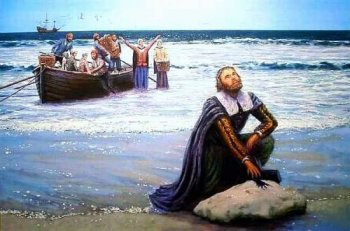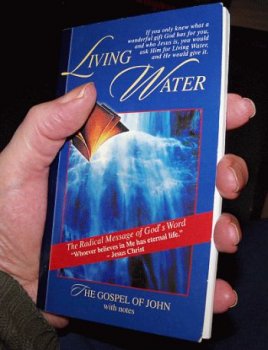I don't belong to any church because I like to think for myself..:)
It'd good to think for yourself. Consider this:
massive self-contradiction:
1. Jesus is physically present in the Supper.
2. But He is physically present at the right hand of God.
3. We are physically present with Christ in the Supper.
4. But we are physically present with Christ at the right hand of God.
Contradictions:
1 vs. 2,
3 vs. 4,
2 vs. 3, and
1 vs. 4.
Why take this view but oppose the view that Jesus is sacramentally present in the Supper?
God can perform miracles but He can’t transcend the laws of logic. If we want to restrict ourselves solely to the literal post-Resurrection body of Christ, then we can’t say that is “physically present” in the Supper while simultaneously at the right hand of God, because that is a contradiction, as much as it would be a contradiction to say that Jesus was physically present in Jerusalem during His crucifixion, but simultaneously at the Sea of Galilee.
But the
Catholic view is
not contradictory because the miracle of transubstantiation is an additional mode of presence of Jesus that is physical in a way approximating spiritual omnipresence (similar in a sense to His post-Resurrection body when He appeared to His disciples and seemed to walk through walls). We are not with Jesus in heaven yet but He is sacramentally and eucharistically with us, by the miracle of the transformation of the elements. In other words, one has to posit the additional miracle of transubstantiation (or at least consubstantiation) in order to have the physical presence.
If Calvin and the Reformed believe that we are actually transported to heaven to meet Jesus there (during Holy Communion), why is it so difficult to believe that He can substantially be present
here under the appearances of bread and wine? Both scenarios involve something that transcends our senses, and must be believed on faith. But I think
one involves a logical contradiction and the other does not.
We say it is the accidents which are spiritual and not what they appear to be.
So Reformed say, “He is truly here physically, but you are not physically eating His body.”
Catholics say, “He is truly here physically, and you are physically eating His body, even though it appears to be merely bread and wine.” I do see a certain symmetry between the two views because both are saying that you have to deny the evidence of your senses and believe that something miraculous is taking place. The difference is that we cannot yet be in heaven with Jesus because we are not yet glorified bodies and spirits as He is. He can make Himself physically present with us because He is God and can do anything. We can’t literally be with Jesus in heaven until we die and go there or unless we have some miraculous experience like Paul, being taken up to the third heaven.
Sure, we must all admit that God
could conceivably perform a miracle like that, too, but I see no reason to believe that He in fact
does, because there is no indication in Scripture that such a thing occurs at every Eucharist. Thus, I would say that the Reformed view fails the tests both of Scripture and patristic belief.
We’re told by Reformed that Jesus is physically present at the Lord’s Supper, but not in the bread (or what was formerly bread). This makes no sense, and is contradictory:
1. Jesus is physically present in the Supper.
2. Jesus is not physically present in the bread and wine.
3. But the Supper and the bread and wine are synonymous.
4. Therefore, it follows that Jesus is somehow physically present and not physically present at the same time,
which is a contradiction and impossible.
If Reformed Protestants want to stress the literal human body of Jesus in heaven (and the counter-charge is that we are somehow
minimizing this in our view, and obliterating
Chalcedonian Christology), and want to make the Eucharist dependent on, or limited by that, then it is strange to make Jesus “physical” in the Eucharist (but not in the bread) and to hold that “the Holy Spirit, in this Sacrament, raises us to Christ where, mysteriously, we feed on his true body and blood.”
It’s this constant irrational shifting between “mystical” and “physical” which is the problem. Reformed Protestants refer to a literal feeding on Christ, but He is in heaven, etc. . . . But now we are told that it is a “mystical” presence. So which is it? And how is any of this less difficult to believe than transubstantiation?
I see little (if any) indication in either Scripture or the history of doctrine prior to Calvin and Zwingli that we somehow meet Jesus in heaven (“physically”) during the Eucharist before we actually arrive there after death.
Transubstantiation is not self-contradictory. It is a difficult concept, unusual, a profound miracle which requires exceptional faith, but involves no logical inconsistency. God can do any miracle He so chooses. He can transform the bread and wine into His Body and Blood. That makes sense to me because if God could become a Man He can make Himself substantially present in consecrated elements that were formerly bread and wine.
read more here:
https://www.patheos.com/blogs/davearmstrong/2017/11/john-calvins-mystical-view-eucharist.html


